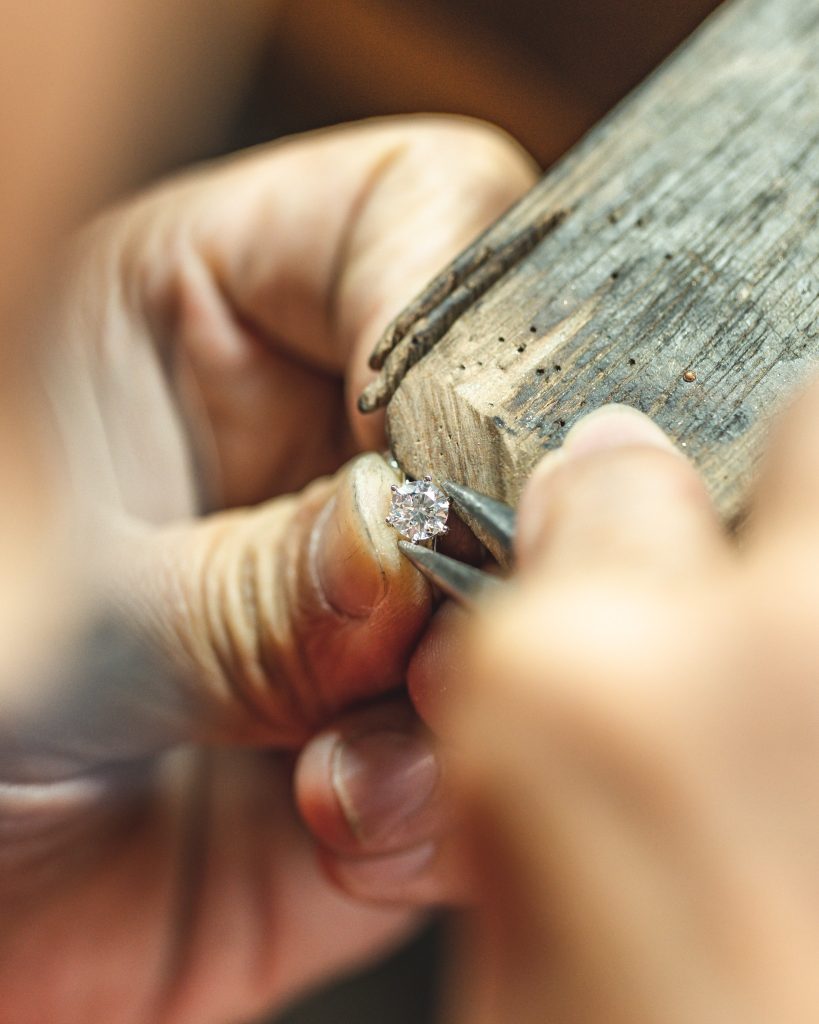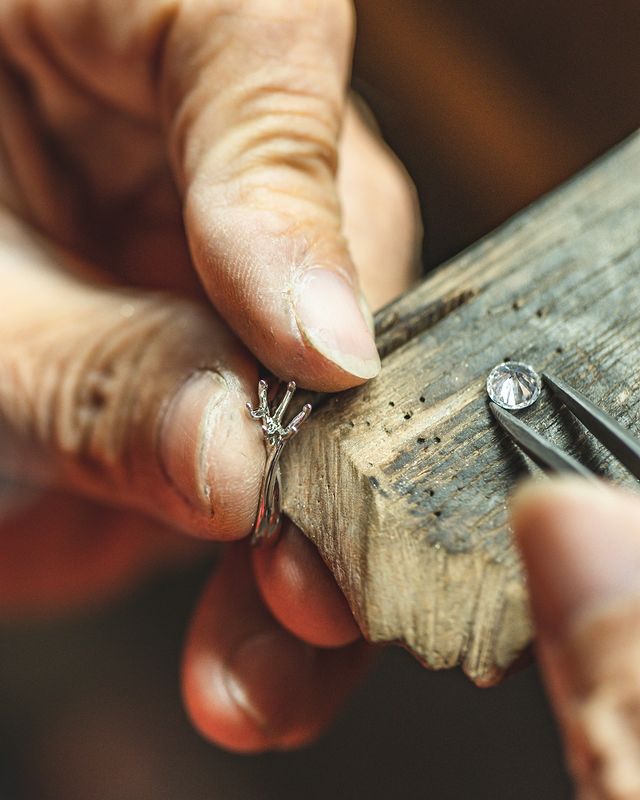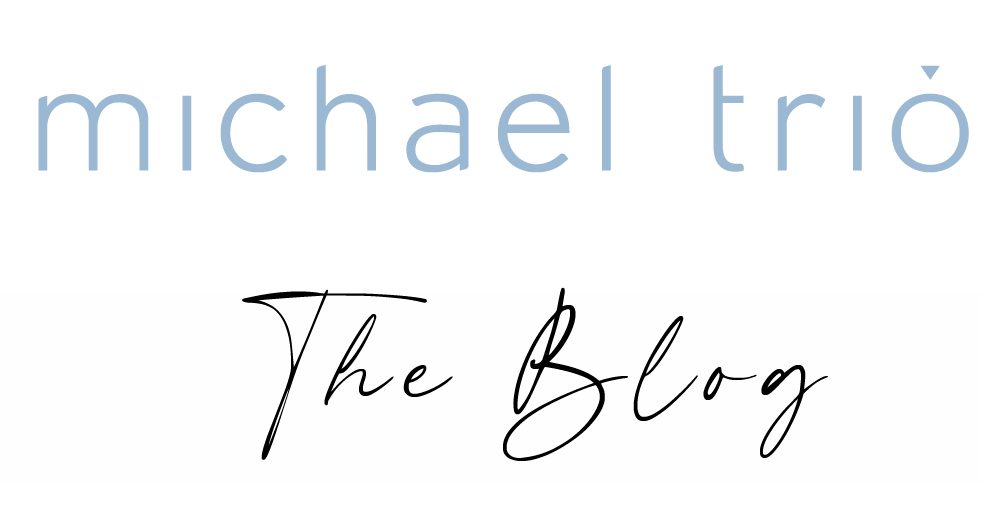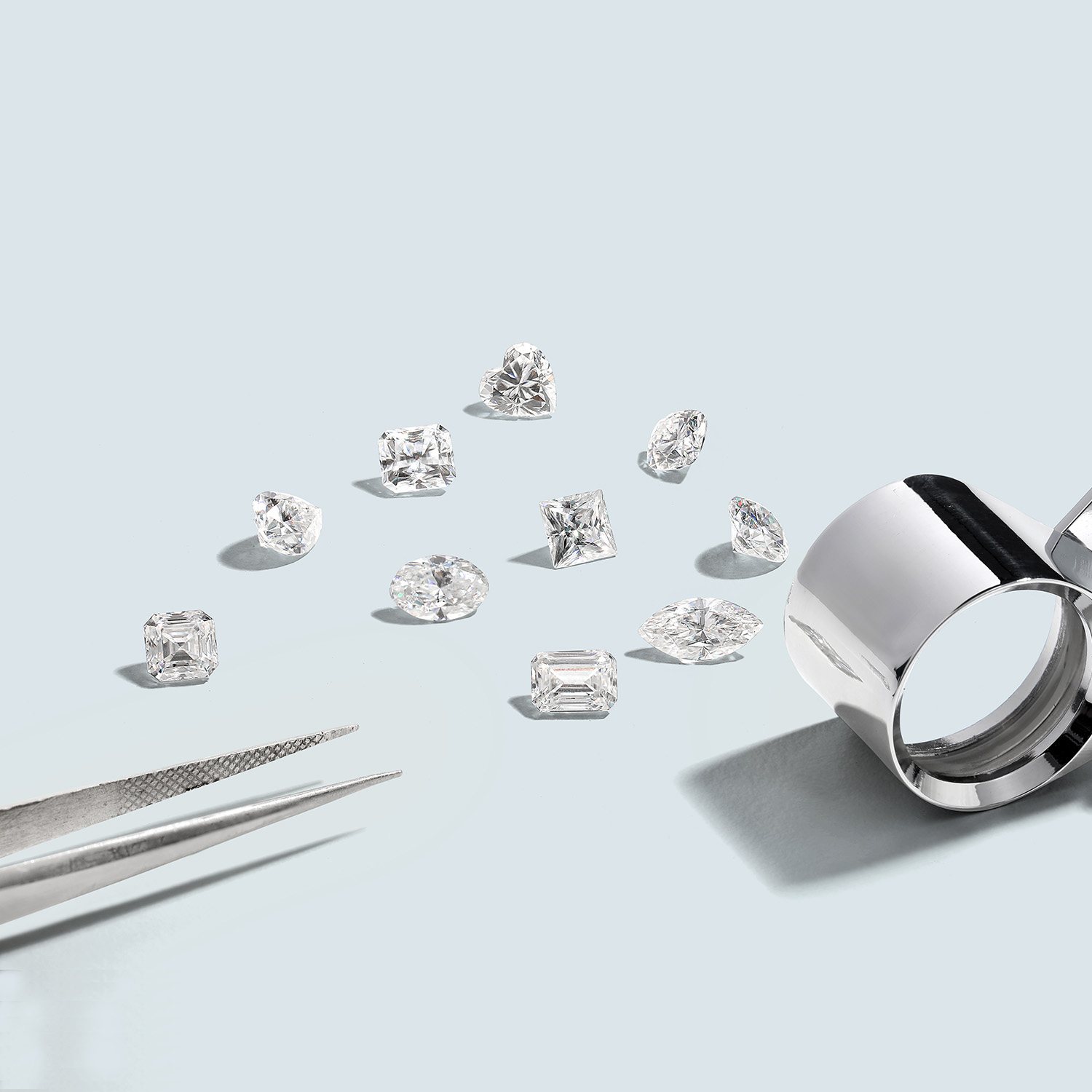What is Diamond Clarity?
When we talk about diamond clarity, we’re diving into one of the crucial aspects that determine how good a diamond is. Think of it like a report card with four important grades: carat, color, cut, and, of course, clarity. Clarity is like the detective work of diamonds, dealing specifically with these tiny flaws called inclusions that might be hiding within. These inclusions happen due to extreme heat, pressure, or both during the diamond’s growth.
Why Diamond Clarity Matters
Now, why does clarity matter so much? Well, these inclusions impact how a diamond looks. Some are hard to notice, while others can make a diamond look less sparkly or even damaged. Understanding clarity is vital when choosing a diamond to ensure you get what you want.
The best clarity rating is Flawless (FL). These diamonds are super rare – less than 0.05% of all diamonds fall into this category. It’s not recommended to buy diamonds with lower clarity, especially for something as special as an engagement ring. For this reason, Michael Trio doesn’t offer diamonds below SI2 in its clarity options for diamonds.




Deciphering the GIA Clarity Scale
The Gemological Institute of America (GIA) stands out as the preeminent diamond grading laboratory globally, offering a comprehensive clarity scale:

FL (Flawless)
A Flawless diamond is exceptionally rare, and it is considered to have no visible imperfections even to a skilled grader. Diamonds in this category are highly prized for their purity and are often associated with exceptional quality and brilliance. Due to their rarity, Flawless diamonds are typically more expensive than diamonds in lower clarity grades.
IF (Internally Flawless)
An Internally Flawless diamond may have some external blemishes but is free from any internal inclusions when viewed under 10x magnification. These inclusions and blemishes are not visible to the naked eye, making Internally Flawless diamonds highly valued for their exceptional clarity and beauty.
VVS (Very, Very Slightly Included)
VVS1
Diamonds in the VVS1 category have minute inclusions that are extremely difficult for a skilled grader to see under 10x magnification. These inclusions are typically microscopic and do not affect the diamond’s appearance. VVS1 diamonds are considered to have exceptional clarity.
VVS2
VVS2 diamonds have slightly more noticeable inclusions than VVS1 diamonds under 10x magnification, but they are still very difficult to see. Like VVS1 diamonds, VVS2 diamonds are of extremely high clarity and are often chosen for their exceptional visual appeal.
VS (Very Slightly Included)
VS1
Diamonds in the VS1 category have minor inclusions that are difficult for a skilled grader to see under 10x magnification. These inclusions are typically not visible to the naked eye, and VS1 diamonds are also still considered to have excellent clarity.
VS2
VS2 diamonds have slightly more noticeable inclusions than VS1 diamonds under 10x magnification. However, like VS1 diamonds, the inclusions in VS2 diamonds are generally not visible to the naked eye without magnification.
SI (Slightly Included)
SI1
SI1 diamonds have inclusions that are noticeable to a skilled grader under 10x magnification. However, these inclusions are generally not visible to the naked eye, making SI1 diamonds a popular choice for those seeking a good balance between quality and budget.
SI2
SI2 diamonds have slightly more noticeable inclusions than SI1 diamonds, but they are still typically not visible to the naked eye without magnification. The appearance and visibility of inclusions can vary within the SI2 category.
I (Included)
I1
I1 diamonds have inclusions that are noticeable to a skilled grader under 10x magnification. These inclusions may be visible to the naked eye, affecting the overall appearance of the diamond.
I2
I2 diamonds have even more noticeable inclusions that are visible to a skilled grader under 10x magnification. In some cases, these inclusions may be visible to the naked eye, impacting the diamond’s beauty.
I3
I3 diamonds have inclusions that are easily visible to the naked eye. These diamonds often have significant clarity issues that can affect both the appearance and structural integrity of the stone.
Some inclusions in diamonds are super tiny and need an expert to see them. Even though a VS1 and an SI2 diamond might look the same to your eyes, they’re actually quite different in quality. That’s why it’s so important to have experts check and understand the clarity of diamonds. Knowing about diamond clarity helps you figure out why diamonds can be different in quality and price.
Do lab-grown diamonds have inclusions?
Yes, lab-grown diamonds can have inclusions. Inclusions are natural occurrences in diamonds, whether they are mined or created in a laboratory. The presence of inclusions can affect a diamond’s clarity grade. Lab-grown diamonds, like their mined counterparts, undergo a grading process that includes an evaluation of their clarity. Lab-grown diamonds can be found in various clarity grades, ranging from Flawless to Included, depending on the presence and visibility of inclusions.
If you’re thinking about getting a lab-grown diamond, ask about its clarity grade and for a report from a trusted gemological lab. This report tells you all about the diamond’s features, helping you decide based on what matters most to you.


Choosing the Right Grade
Choosing the right diamond clarity grade depends on individual preferences, budget, and lifestyle factors. While higher clarity grades generally command higher prices, the difference in appearance between VVS2 and SI2 clarity may not be significantly noticeable to the naked eye.
Budget-conscious buyers may consider opting for SI2 clarity diamonds, while those seeking the ultimate clarity can opt for FL or IF grades. However, it’s crucial to consult a reputable jeweler for expert guidance tailored to your specific needs and preferences.
For those embarking on the journey of choosing a diamond, the following tips can prove invaluable:
- Set a budget: Establishing a budget helps narrow down options and streamline the selection process.
- Consider your lifestyle: An active lifestyle may warrant choosing a diamond with a lower clarity grade to accommodate potential wear and tear.
- Look at diamonds in person: Viewing diamonds first hand provides a tangible understanding of their visual appeal and characteristics.
- Get a diamond grading report: This report furnishes essential information about the diamond, encompassing clarity grade, color, carat, and cut.
- Ask questions: Don’t hesitate to inquire about the diamond. A reputable jeweler will gladly address any queries, fostering confidence in the chosen diamond.

